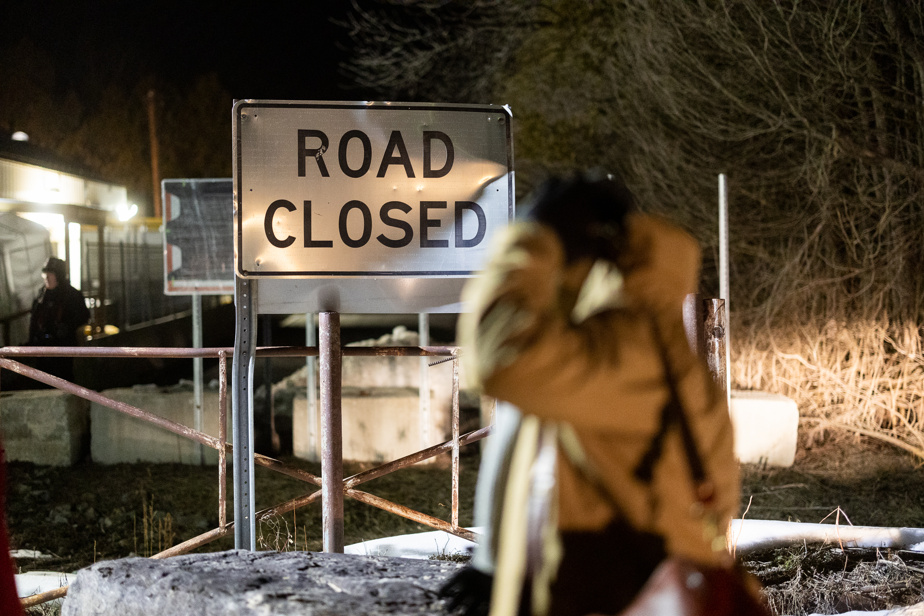A year after the closure of Roxham Road, Canada receives more asylum applications. The number is relatively stable in Quebec, but is exploding in Ontario.
What there is to know
The closure of Roxham Road did not have the desired effect.
In Quebec, the number of asylum requests is relatively stable, if we compare the first two months of 2024 with those of 2023.
Ontario is the province that now hosts the largest number of asylum seekers in Canada.
A comparison of federal government data from the first two months of 2024 with that of 2023, when Roxham was still open, shows the total number of asylum applications increased from 20,530 to 31,255.
In Quebec, it fell slightly, from 13,390 to 11,865. But it practically tripled in Ontario, going from 5,600 to 15,585, so much so that the proportion of asylum seekers welcomed by the two provinces increased. reversed: the share of the Canadian total hosted by Quebec fell from 65% at the start of 2023 to 38% for the first two months of 2024. For Ontario, from 27% to 49%.

Behind these totals, we find significant changes in the flow of asylum seekers.
Federal authorities distinguish two main categories of asylum seekers, those who make their request upon arriving in Canada, either by plane or by land border, managed by the Canada Border Services Agency (CBSA), and those who apply once they are in the country, for example international students or tourists, managed by Immigration, Refugees and Citizenship Canada (IRCC).
Asylum applications filed at ports of entry fell across Canada, from 13,365 to 11,925. With a sharp drop in Quebec, from 11,415 to 6,940, and an increase in Ontario, from 1,700 to 4,470.
This is explained by the Roxham effect, which strongly affected arrivals by land, which increased from 10,490, for the first two months of 2023, to 2,995, in 2024. It is of course Quebec which benefited from this change with a very sharp drop in arrivals of this type, from 9505 to 1755, the number remaining low and stable in Ontario, from 835 to 960.
It should be noted that the closure of Roxham Road did not have a consequence feared by many experts, namely the risk to health by seeking other ways to cross the border on foot. There were tragedies, but they did not concern people trying to enter Canada, but rather people leaving the country to enter the United States illegally.
This drop in land entries was partly offset by arrivals by plane, and therefore of applicants from other countries, notably Mexico. These air entries tripled in Canada, going from 2860 to 8925. The increase was strong both in Quebec, from 1910 to 5180, and in Ontario, from 860 to 3510. The proportion of arrivals in Quebec thus fell slightly, but it remains strong, going from 67% in 2023 to 58% in 2024.
Trend reversal
But there was another big change: asylum applications made on the IRCC site by foreigners already on Canadian territory, where there was literally an explosion, from 6,820 in 2023 to 19,045.
And in their case, Ontario is the main place of residence. In Quebec, the number of these asylum seekers increased from 1,890 to 4,900. In Ontario, it increased from 3,835 to 11,045.
The trend reversal is significant. At the start of 2023, these applicants on site were half as numerous as those who had claimed asylum upon entering the country, 6,820 compared to 13,365. In 2024, they became the main route to asylum, one and a half times greater than entries at the land border, 19,045 compared to 13,365.
Many of these applications are filed by foreigners who entered Canada on a visitor visa or study permit.
According to federal data transmitted to The Press, 2,595 study permit holders requested asylum in Quebec last year. This number has tripled compared to 2022.
Quebec’s “options”
Furthermore, the Minister of Immigration of Quebec, Christine Fréchette, reacted to the latest count from Statistics Canada, released Wednesday, of the number of non-permanent residents as of 1er January 2024. She again asked her federal counterpart to better distribute asylum seekers in the country, whose number was estimated at 176,733, in Quebec, in 2023, out of a Canadian total of 329,000. This figure however, includes asylum seekers who have been granted refugee status and those whose applications have been rejected or abandoned.
“We received the figures from Statistics Canada and these figures tell us that on 1er January 2024, there were 176,000 asylum seekers in Quebec, which represents 54% of asylum seekers in all of Canada,” indicated the minister.
Clearly, the federal government must take its responsibilities and distribute asylum seekers throughout Canada, to the other provinces.
Christine Fréchette, Quebec Minister of Immigration
Hot on the heels of the Salon bleu by Paul St-Pierre Plamondon, François Legault affirmed that his government’s “approach” is to “negotiate” with Ottawa. “What are your predictions for the first quarter of 2024? What are the Prime Minister’s predictions? Will it continue to increase? Are we going to achieve any results with Ottawa? “, asked the PQ leader, urging the Prime Minister to clarify his “options” in the event of refusal.
Mr. Legault must soon table a “plan” to publicize his government’s “options” to reduce temporary immigration to Quebec. It should be remembered that it already controls a large proportion of non-permanent residents admitted to the territory, in particular foreign students and workers in the temporary foreign worker program (PTET).
With the collaboration of Fanny Lévesque, The Press
Learn more
-
- 174,200
- Number of temporary immigrants who were added to the population of Quebec in 2023.
Quebec Statistics Institute
- 22%
- Quebec’s demographic weight in Canada as a whole.
Quebec Statistics Institute
